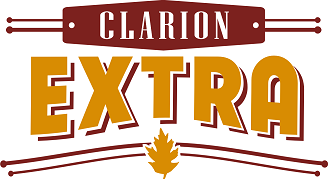By Tom DiStefano
Staff writer
It’s been a warm winter, and it may or may not end at any time, so it could be a long spring brush fire season this year.
Mother Nature may soak us until May, or she might cover us with snow for the rest of March, but this is the time of year when last year’s dead vegetation can turn to tinder with just one sunny morning.
A few brush fires broke out in February this year, and it will be a long time before the trees fully leaf out in May and reduce the outdoor fire hazard.
It’s time to clean up old leaves, pick up fallen limbs, cut brush, and throw out the trash building up all winter and it’s tempting to just set it all on fire.
Don’t. Even if it rained just yesterday, a little bit of sun and breeze will turn dry vegetation into fuel very quickly.
Instead, pile up the brush, leaves and deadfalls and cover the pile with a tarp to burn on a rainy day when things green up.
Better yet, compost it, or if you have the acreage, set up brush piles as habitat for your furry and feathered friends.
Wildfires don’t start themselves and Smokey can’t prevent them, only people can do that. Smokey’s just a bear.
Local volunteer fire departments are facing tight budgets, and using resources on brush fires can mean less protection for homes and lives.
Maybe you didn’t mean to set the field on fire, but you may be liable to pay the cost of putting it out, and that can add up to many thousands of dollars.
The state Bureau of Forestry does not take kindly to those who recklessly endanger our wild lands.
If fire or forestry officials find you let fire get out of control, they can tally up the costs and make you pay. And there are ways they can tell just where and how that fire started.
If you must burn:
- Cover brush, leaves and other debris with plastic until conditions are right for burning. Wait for a significant rainfall that thoroughly soaks surrounding vegetation.
- Never leave a fire unattended.
- Have water and hand tools such as shovels and rakes nearby.
- If you must use a burn barrel, cover it with a wire mesh screen to prevent sparks from escaping, and make sure there are holes in the bottom to provide air to the fire so it burns quickly and completely without smoldering for long periods.
- Make sure all fuels, grass and brush are cleared for a space of at least ten feet around the fire so that stray sparks land on bare earth.
- If a fire gets out of hand, do not delay calling 911 for help by trying to fight the fire alone. Once you are sure fire fighters are on the way, and you feel confident you can do some good, then try to control or slow the spread of the fire. Be sure to give 911 dispatchers a road address.
- Do not try to fight a wild fire unless you are in good physical condition; those with heart or lung problems are at serious risk from exertion and smoke when trying to fight a wildfire.
- Make sure a fire is dead out before leaving the scene. Rake the ashes and feel for heat to make sure there are no hidden hot coals. Fires can lie dormant for several days then blaze up again. Ashes keep hidden coals hot, and a breeze can blow away the ash and get the fire going again.
- Contact your local fire department or the forestry office before starting a “controlled burn” to make sure weather conditions are right and the fire company knows what you are planning. The Department of Conservation and Natural Resources, Bureau of Forestry office in Clarion can be reached at 226-1901.

